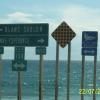Turbo or no turbo
-
Members Online
- MDMooney
- Planegary
- KHyde
- hammdo
- Fly Boomer
- EricJ
- M20S Driver
- mooneyfun
- Bunti
- philiplane
- BlueSky247
- spaceman39a
- Rick Junkin
- blankc
- PT20J
- Sheriff23
- Jeff Uphoff
- kortopates
- FlyingDude
- Rmfriday
- MB65E
- 1980Mooney
- ArtVandelay
- Ragsf15e
- richardbrochu27
- MateuszP
- Thedude
- MikeOH
- dkkim73
- Aerodon
- 231MJ
- CL605
- Scott H
- varlajo
- Justin Schmidt
- midlifeflyer
- FoxMike
- Scott Ashton
- Shadrach
- JoMo


Recommended Posts
Join the conversation
You can post now and register later. If you have an account, sign in now to post with your account.